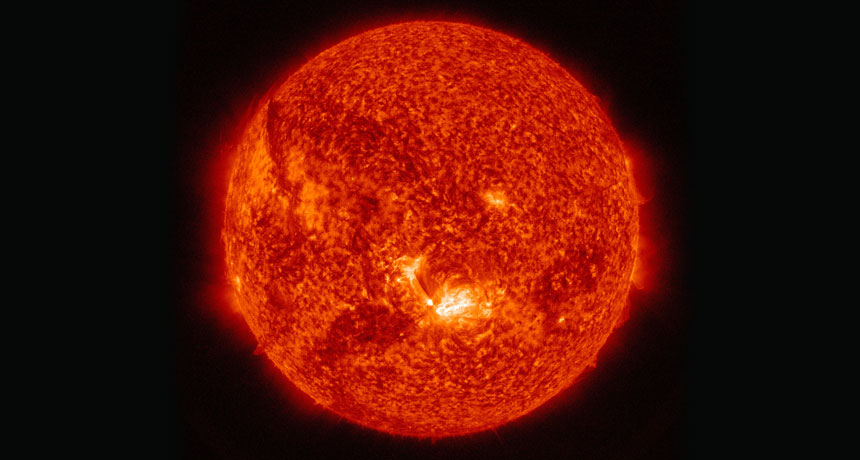A slowdown at the sun’s surface explained

Never underestimate the power of a little sunlight.
Light particles, or photons, emitted from the sun’s surface, could explain a long-standing solar mystery — why the sun’s outermost layers rotate more slowly than its core.
Because the sun isn’t a solid ball, regions at different depths or latitudes rotate at different rates. For decades, scientists have wondered why the outer 5 percent of the sun revolves slower than inner regions. In the Feb. 3 Physical Review Letters, researchers from Brazil and the United States report that photons released from the sun’s outer skin may be tapping the brakes.
Using data from NASA’s Solar Dynamics Observatory satellite, scientists measured the rotation in the sun’s limb, or outer edge. In a thin, 70-kilometer skin at the surface, the rotation rate drops by 2 percent — a result that could be explained by photons carrying angular momentum away from the sun, slowing it down bit by bit. Angular momentum is a property of a rotating body that keeps an object spinning unless another force acts on it — like a spinning ice skater gradually coming to a stop due to friction. Over time, the surface slowdown could cause the full outer 5 percent of the sun to lag behind, the scientists say.



